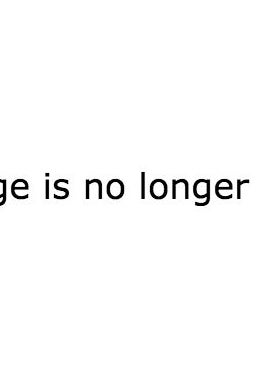Are you ready?

The curtain opened Monday on the video for "Applause," Lady Gaga's first single in almost two years. And she's right back at it, putting out a video rich with various influences and symbolism-overload, though this time it clocks in at a reasonable 3 minutes, 36 seconds instead of the nine-minute video epics we were growing accustomed to from her. "Applause" was directed by famed fashion photographer duo (and previous Gaga collaborators) Inez van Lamsweerde and Vinoodh Matadin.
The video is visually stunning, but it can also get confusing, with references to Greek mythology, German expressionist horror films, Hindu goddesses, and callbacks to previous Gaga videos. We're here to help break it all down for you.
The video opens with Lady Gaga descending to the stage in all her skeletal-winged glory, clearly referencing German expressionist Fritz Lang's 1927 sci-fi film, Metropolis.


The art deco design of the urban skyline from Metropolis is echoed here in the stage setup for much of "Applause." In 2009, David LaChapelle famously photographed Gaga as an android against a Metropolis-inspired background for a photo shoot. Gaga later invoked the imagery in her videos for "Alejandro" in 2010 and "Born This Way" in 2011.
Lang's film tells the story of a futuristic dystopia, and the gap between the wealthy industrialist class and the lower class of workers who power the machine and an android disguised as a character named Maria, who helps to inspire a revolt among the working class.
Gaga has always been fascinated with dualities, and frequently plays with this in her work, so it makes sense that she would be drawn to Metropolis.



“Born This Way” depicted her as reborn but split into two forces: Good and Evil. In “Applause,” we eventually witness a transformation: a death and a rebirth. Deep.
And it's never a Lady Gaga video without some kind of Madonna connection.



Madonna's video for "Express Yourself" was also inspired by Metropolis, and many of the images in the video have been referenced in Gaga's videos, like the images of attractive men working heavy machinery. Images at left and middle from "Express Yourself," and image at right from Gaga's "Alejandro."
Next, we see Gaga in a black lace underwear getup in cat pose on a mattress, which is a flashback to her youth but also reminiscent of her "Alejandro" video.


Director Inez van Lamsweerde told MTV that this look is representative of a young Gaga, as she looked when she was 18 or 19, "when she was fresh out of school and living in the Lower East Side and dreamt of whatever her future would be."

The flashback of this young Gaga dreaming of things to come would make sense then, since she's playing out dance scenes that would later feature in her career, like the mattress scene from the "Alejandro" video. In it, Gaga flips traditional sexual gender roles and flirts with bondage while writhing around on a bed set in a stark room.
Next, Gaga emerges from a magician or witch's cauldron with a crazed expression, a clear parallel to another German expressionist silent horror film from 1920, Dr. Caligari.


In the film, Dr. Caligula controls a man named Cesare, a somnambulist (i.e. a sleepwalker) whom he flaunts as an exhibit at carnivals, and has him do his bidding to carry out various fatal "predictions." (Dr. Caligula also wears a top hat, which we see Gaga emerge from in a scene soon after.)
Gaga told ABC that the cover image for "Applause" is an ode to the jester, and explained, "What I mean is not that I live for attention, but I live for making them happy. And that's when the applause happens. When the audience loves it."
In this image, Gaga, much like Cesare, is performing for an audience, and willing to do anything to appease her master. For Cesare, that meant, uh, killing people. For Gaga, it's catching whatever knives and daggers her critics may throw at her, and continuing to transform and reinvent herself for our enjoyment. The applause — her fans' satisfaction and happiness — is its own kind of control over her.
Transformation! Magic! Get it?
Lady Gaga's black skullcap and bodysuit are one of the more prominent looks throughout the video, and they're a pretty strong reference to Swedish film director Ingmar Bergman's 1957 film, The Seventh Seal.


Set during the Black Death (i.e. the bubonic plague), the movie features a man playing a game of chess with the character Death, personified, who also wears a black skullcap and long black cloak.
The film deals with issues of spirituality, God, the devil, and general mortality in a plague-ridden town. For Gaga, ARTPOP is a new chapter in her career, and she must bury and move on from many of the personas she's created. We see her more explicitly retiring certain identities and eras later in the video, but this image of Death is symbolic throughout for her new beginning.
The image also calls back to "Alejandro," during which Gaga is outfitted as a nun, wimple and all.

Here we see Gaga in the magician's top hat, ready to transform and perform tricks for her audience.

The hat has "Lady Gaga" inscribed inside the brim, so we see that the hat is hers; she plays both the role of the Mad Hatter/magician character as well as the object being transformed, therefore in control of her own image.
The image of a yellow-haired Lady Gaga wearing red lipstick is reminiscent of Andy Warhol's depiction of Marilyn Monroe, a star who experienced the same trappings of fame which Gaga so often comments upon.

But it's also a callback to "Telephone"-era Gaga, a period during which she rocked the shorter yellow bob.


Warhol played a huge influence in the “Telephone” video, which explored themes like consumerism in pop culture and issues of gender and sexual equality.
Below, center, we see Mother Monster in "Applause," wearing a skeleton top, as she did when performing "Bad Romance" during the 2009 American Music Awards.



Her hair and getup are an obvious callback, and the symbolism of her in a birdcage is clear: Like a caged songbird, she's on display — Fame Monster-era Gaga literally trapped by fame. (The bird imagery also comes into play later, when she's reborn as a swan.)
"Bad Romance" and "Telephone" are both from that second album, The Fame Monster, which dealt with the darker parts of celebrity, as well as her various fears of love, death, loneliness, sex, and even alcohol. Here, as part of her next chapter, we see that identity locked up and retired.
Next, Lady Gaga channels Pierrot, a stock character in pantomime and commedia dell'arte.


In an essay on Gaga Stigmata, an academic blog dedicated to all things Lady Gaga, scholar Roland Betancourt made the apt comparison of Gaga as sad clown Pierrot, who also wears a billowy white outfit and white neck ruff, similar to the parachute-like white cloak here.
Of her "ode to the jester," Gaga explained that her smeared painted face represents her crying from sadness from not having had direct connection with her fans in a long time.

Like a jester who lives for the applause and laughter of its audience, Gaga is also exposing herself as dependent upon the love of her fans and her life dedicated to entertaining.
Lady Gaga plays with duality again, this time employing a yin and yang — life and death, dark and light, performance and truth.

In the past she's described her first two albums, The Fame and The Fame Monster, as yin and yang of each other, exploring opposing sides of fame and identity.
Gaga's always loved incorporating Greek mythology into her work, and her skeletal wings and flying invoke the myth of Icarus.


In the myth, Icarus' father makes his son a set of wings made from wax and feathers, but warns him from flying too close to the sun or the sea. But Icarus' own ambition and curiosity get the best of him as he moves closer and closer to the sun until the wax melts, and he falls to the sea where he ultimately drowns.
We see Gaga both flying and walking the catwalk with her wings, but later on during the climax of the song, we see her fall. Her Fame-era Gaga, who maybe got too consumed in her own art (or perhaps sacrificing herself for reinvention), falls to the ocean to come back reborn as a swan and as Venus (as we see later in the video), who is also born from the ocean.
The angel wing imagery also acts as a touching homage to two of Lady Gaga's biggest influences, David Bowie and her late friend Alexander McQueen.

Bowie wore his skeletal wings during his 1987 Glass Spider world tour, while McQueen used the imagery for his Spring/Summer 2008 fashion show.


The McQueen connection is further solidified by the fact that we see Gaga strutting down a runway, and posing glamorously, as if for a high fashion shoot. She sees her whole being as living, breathing art, and the world is her stage.

Here we see Gaga in quilted puffer jacket and cravat, and there are also exaggerated painterly shadows and highlights on her wax-like face, an image that feels influenced by the work of photographer Cindy Sherman, of whom Gaga is a noted admirer.


Sherman is best known for her self-portraits, in which she completely transforms into a different character each time, even going to the lengths of plastic surgery in order to get just the right look for her art. That's the kind of dedication and passion to shapeshifting that Gaga aspires to and practices herself.
Mother Monster also shares Sherman's love for the slightly grotesque. "For me, a great portrait is something that combines the familiar with the unfamiliar — something seductive but also repulsive," Sherman told the Wall Street Journal in 2012. "I want to go, 'Ew,' but then can't stop looking. So there's a push-pull thing to it. I also see the humorous aspect, not just the horrible. It's exciting in its gruesomeness."
From Gaga's meat dress to her bloody award performances to her music videos, she's always playing with those expectations of femininity and creating images that both disturb and awe her audience. Here, in a video all about transformation and personal evolution, she channels Sherman to play with these different faces and identities that live within all of us.
Gaga's a centaur! She emerges from the top hat with half her lower body transformed into a silver shining, glittering horse leg and tail. (And what a beautiful tail it is!)

She previously dressed as a centaur in a photo shoot while promoting Born This Way.
In Greek mythology, centaurs are half human and half horse, caught between two different states of being. This is yet another example of the duality that Gaga finds herself exploring in the video. Centaurs were known for their affection for chaos and debauchery, as well as their fighting spirits, often going to battle. They also pulled chariots for Dionysus, the Greek god of wine, and were ridden by Eros, the god of love.
"Applause" is a video that tracks both Gaga's journey from a young hopeful trying to make it into a star, as well as her commitment to please her master (her fans) — she works for their love, just like the centaurs worked for Eros.
Gaga strikes a pose that's straight out of Madonna's video for "Vogue," which in turn was inspired by the work of German photographer Horst P. Horst.


There's a divine-like implication in these particular images, one that she's played with in her previous music videos as well.


By manipulating light and dark, coupled with an upward gaze to the heavens, Gaga elevates herself to a saint-like status, as she did in "Born This Way," in a scene that recalled Gian Lorenzo Bernini's "The Ecstasy of Saint Therese."
Given the context of "Applause," the divine imagery lends itself to the idea that Gaga will always sacrifice herself in the name of her art.
Gaga/Icarus floats at the top of a human pyramid in the shadows, an image that once again echoes the scene from "BTW" of the birth of evil (pictured below at right).


Both of these images bear resemblance to many works portraying "The Last Judgment," like those by Jan van Eyck, Michelangelo, Hans Memling, and "The Gates of Hell" by Rodin.
They all feature a divine figure atop stacks of writhing bodies, representative of the underworld.
However, when the stage is lit, we see the people in the pyramid aren't weak or writhing at all; instead, these are strong bodybuilders wearing latex swimsuits, flexing their oiled-up muscles as Gaga flies above them.


It's still a death scene in a few ways: Gaga is wearing her Death costume, and given what we know about the myth of Icarus, we know she'll soon fall after reaching the sun (as we see later in the image above at right). However, her being gives her followers strength, and she exists to feed them until she must reinvent herself yet again.
The many faces and emotions of Gaga, the jester!

"As I was performing on the set, I started to feel really emotional and sad because I hadn't seen my fans for a long time," Gaga told ABC.

"It's very different performing for a camera than performing for 50,000 people. It feels different, and I truly miss them. So I took my hands and I smudged the makeup down my face like tears, and I began to cry while I was singing, singing, 'I live for the applause.'"
Lady Gaga is not Stefani Germanotta, even if Germanotta plays Lady Gaga. Without her audience, and without her applause, Gaga would cease to exist.
Gaga scholar Ella Bedard commented on this point in an essay about "Poker Face":
She is only insofar as she exists before the eyes of the public: as much as her audience is captivated by her performances, she is not only captivated but produced as a result of the devotion and constant attention of her fans.
Following Gaga's fall from the sky, we see her reborn as the goddess Venus, in a scene inspired by Sandro Botticelli's "The Birth of Venus".


Inez van Lamsweerde explains to MTV that this is symbolic of Gaga's struggle to get back onstage as "a fully-realized, complete new person" following her hip injury. Gaga emerges from the top hat/cauldron like Botticelli's Venus rises rom the sea in a clam shell, and her hair is styled like the goddess' long, flowing golden mane.
Venus is the Roman version of Greek mythology's Aphrodite; she's the goddess of love, sex, beauty, and fertility. This fits with Gaga's theme of reinvention, as well as her obsession with art and aesthetic stimulation.
Furthering the Venus connection even more is Gaga's Aug. 19 release date for "Applause," which also happens to be the date of Vinalia Rustica, the oldest-known Latin festival honoring Venus. The day celebrates gardens, harvest, wine, and fertility.
Coincidence, much? I think not.
As Gaga strikes a goddess-like pose, instead of a clam shell framing her body, ghoul-like hands rise up to claw around her, a reference to both her Little Monsters and The Little Mermaid.


The claws are just like her Little Monsters and their monster-claw "paws"! But the claws also recall the scene from The Little Mermaid, a connection first made by art history scholar Roland Betancourt in his essay analyzing the video, "The Chromatomachy: Demeter's Salvation of Persephone, and other Chromatic Myths." Ursula takes Ariel's voice from her; green, clawing hands reaching out to grab her vocal chords while she sings.
In both examples, it's a case of someone wanting another person's voice and their gift; Ursula wants Ariel's beautiful voice for herself, Gaga's Little Monsters want her voice for their enjoyment and entertainment. Gaga is at their mercy.
The hands are also symbolic of the applause that she lives for, that has the capability of pushing her to constantly strive for reinvention.
Ah, the glove-kini. Gaga's bikini made of black gloves is easily the most striking image of the entire video.


For a song called "Applause," there had to be hands, van Lamsweerde told MTV.
There are a couple ways to read this:
1) As the object and entertainment up for offer, the hands are both her Little Monsters clutching at her for more, but also claiming ownership over her. She's their jester, after all, right?
2) She also throws up the "all-seeing eye" or "eye of providence," which represents an eye of God watching over humankind and the universe. If she is a deity — which she often alludes to here — the hands could symbolize her followers looking to her for guidance and strength.
The glove-kini is also an homage to works before it; she references both Janet Jackson's 1993 Rolling Stone cover, as well as designer Jean Charles de Castelbajac's glove bandeau creation.


The glove-bra was from de Castelbajac's Fall 2011 collection, a designer whose designs she's worn before.
The nod to Janet is perhaps an acknowledgment of Janet's influence on Gaga over the years. "Rhythm Nation" video is just one particular video that's provided endless inspiration for her, with its ground-breaking industrial factory setting and her troupe of backup dancers — an image that Gaga frequently emulates in her own videos.
And then, more birth imagery as Gaga is reborn as a black swan from a furry egg.


Egg imagery has always been a huge fixture in Gaga's performances and videos; she famously spent 72 hours in an egg (or pod, rather) before she finally emerged onstage for her performance at the Grammys in 2011.
He rebirth as swan is symbolic for a few different reasons. Gaga takes the form of a black swan, a term coined by Roman satirist Juvenal in 82 AD, who described "a rare bird in the lands, very much like a black swan." However, it was widely considered that black swans do not, in fact, exist.
The "black swan theory" was created by statistician Nassim Nicholas Taleb, who describes a "black swan" as a highly improbable, rare event that occurs as a surprise, produces a major effect, and can be rationalized by hindsight. "Applause" presents images from throughout Gaga's journey — her as an 18-year-old, hoping to hit it big, her Fame, The Fame Monster, and Born This Way eras — and we can see now how various images from earlier in her career have gone on to become defining moments in both her career and pop culture at large. The young Gaga we see dancing and writhing on a mattress in her apartment in the Lower East Side probably couldn't predict that those same moves would later end up in music videos in her career as a pop star.
The swan also alludes to artist Jeff Koons' balloon swans, her swan figure appearing at the moment in which she sings "One second I'm a Koons / then suddenly the Koons is me."
"This swan is very totemic, very phallic," Koons said in an interview in 2009 about his famous swan balloon sculptures. "But if you look at the side view of the swan, it's all a very sexual harmony and then the inside's totally feminine and vaginal — and so it functions. Beauty is really sexualized [...] I enjoy things that have a lot of layers to them and are connected."
Like Koons', Gaga's work has always explored and played with sexuality, gender roles, and the idea of beauty. In "Applause" we see her playing the roles of an androgynous jester with smeared makeup, a blank canvas with no makeup, a glamorous Venus, and a goddess.
Koons and Gaga are both collaborators and admirers of each others' work; the two are reportedly planning an "art rave" pegged to the release of ARTPOP in November.
Gaga continues to be inspired by Alvin Ailey, and his 1967 modern ballet Revelations, in particular.



Gaga trained at the Alvin Ailey studio in New York while prepping to promote her last album, and she incorporates many of the studio's formations and choreography into "Applause." She's previously mimicked the outstretched hands reaching upward that Revelations, a tribute to traditional slave rituals, had featured as a way to denote the dancers looking to God for guidance and strength.
While "Born This Way" featured Gaga more as a deity, "Applause" features her as a performer, powered by the fans. In this video, their hands are stretched outward toward the viewer, in a vaudevillian, theatrical way. (Jazz hands!) The audience is the whole point, and they're what powers Gaga, so the focus and appreciation is thrust back onto the viewer.
Gaga's elevated to the level of a Hindu goddess by embodying Shakti, a divine force referred to as the "Divine Mother" in Hinduism, a fitting comparison for someone who calls herself "Mother Monster."


Shakti is seen as a protector and nurturer, and representative of divine female creative power and energy in the universe. Gaga sees her fans as her own children, and her most loyal fans revere her as one would a goddess like Shakti.
In a stunning scene, Gaga as Shakti walks the runway through a tunnel of purple and pink laser lights, dragging a mannequin leg behind her.

Van Lamsweerde told MTV that the idea was to depict the struggle for her to get back onstage following her injury. "...She's sort of dragging that leg as a trophy and making it back on stage as a fully-realized, complete new person," she said.
Shakti also symbolizes liberation and power, and the way Gaga carries herself throughout this scene depicts that strength. She's carrying the leg with pride, having fashioned it into a trophy filled with flowers; she's taken a bad situation (like her broken hip) and made into something she's overcome; she's made it into something beautiful.
After the song's breakdown, we see Gaga erupt into a fit onstage as the video cuts rapidly between different scenes.


We see triumphant glitter fall to the stage as Gaga/Shakti holds up the mannequin leg, we see short shots of the struggle to get to the stage — Venus struggling to hang on to the edge of the stage, Gaga fighting with her dancers over the leg/trophy leg — and we see her collapse to the floor in a seizure-like sequence while wearing her glove-kini.
The shots proceed so rapidly that if you look really closely, it almost looks like Gaga is wearing a strap-on dildo in the image above, although it's actually just the bottom of her glove outfit. The hand protrudes in a way that it appears to be a penis, which may or not be intentional.
A stretch? Maybe! But in a Gaga video, everything means something.
She holds the leg up above her in a show of triumph; the leg itself symbolic not only of her triumph over physical burdens and adversity, but also in coming to this point in her journey as an artist.


In this final image, we see Gaga wearing a green jeweled mask custom-made by vintage costume jeweler House of Lavande.

She's lifting one of the eyecaps to reveal a capped mirror, before she quickly lets go and lets it snap back shut.
The image of the one eye open is a nod to her frequent use of the "all-seeing" eye, but also a deeper meaning in the context of "Applause." Gaga scholar Sarah Cook notes that jesters, while funny, were like modern-day comics in that they reflect back truths about everyday life, of society, and of ourselves, even when they may be hard to hear or to face.
In the mirror we see ourselves and our reaction, and because "Applause" is Gaga's testament that she lives and depends upon our approval, our appreciation, and our enjoyment, our reaction is the only thing that really matters.
When she lets the eye cap drop back down, she only sees herself; she exists in a self-reflexive state, living in a constant mode of self-examination and a meditation on her own artificiality.
Gaga exists for us; and without us, she folds back into herself where she becomes no more.

